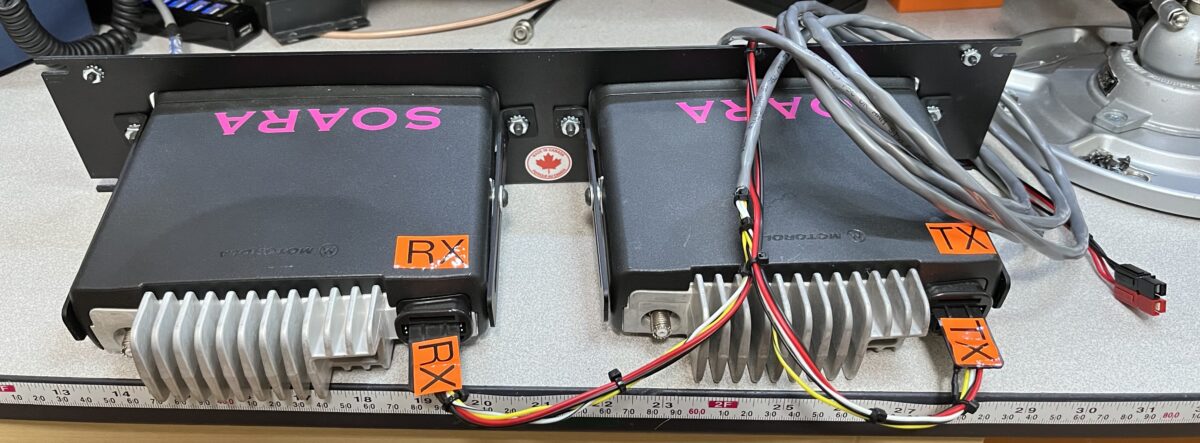Many years ago, SOARA Repeater and Technical folk fabricated 19″ rack shelves that contained Motorola Mitrec radios that were modified for full duplex operation. The shelves were fitted with “flat pack” band reject duplexers and hardline to interconnect them to the radios.
The UHF linking band was monitored for some time using an Icom PCR-1000 receiver with custom software. Eventually, a receive and transmit link band frequency pair for SOARA was coordinated. For a variety of reasons, the Mitrek solution is no longer viable.
At some point, around 2005 or so, a “temporary” solution was implemented that linked the repeater at Temple Hill with the 440 and 220 machines at Santiago by using the 447.180 repeater frequency in half-duplex operation. This is the same way all of our SOARA members used the repeater. The trick in doing this is to configure the Santiago repeater such that the decoded PL/CTCSS from a user transmitter at the repeater receiver drive the transmitter PL/CTCSS encoder. A user would notice that they would only hear other users while running CTCSS decode on their radio. They would never hear the courtesy tone or the repeater ID. This is necessary so that the remote side of the “link” can drop immediately after a user stops talking and not repeat the other sides ID and courtesy tone. This also eliminates “ping-ponging” when both sides repeat their courtesy tone to the other side.
The RLC-4 repeater controller is configured such that it enables the CTCSS encoders for any linked transmitter (e.g. 220 & 440 machines), while any linked receiver is active. The 447.180 receiver at Temple Hill is configured to require that a “qualifying PL” tone be received before the audio is presented to audio bus and 147.645 repeater.
For a week or so in September, 2022, the Transmitter output PL tone was not being presented on the output due to a fault with the repeater controller at the Santiago Site. This caused the Temple Hill side to not “hear” the Santiago side. The problem was solved by replacing the RLC-4 controller with a new one.
An rftechnology transmitter & receiver configured for full-duplex operation was installed at Santiago last year. SOARA has acquired a full-duplex solution for Temple Hill using Motorola CDM mobile transceivers and forced-air cooling that will be installed hopefully before the end of 2022. Full duplex will work much better. Doubling will no longer sound like a heterodyne mess and both signals will be mixed together instead.





In order to use mobile radios in higher duty cycle operation, a Motorola fan rack was configured with three variable speed fans. A fan controller was installed that runs the fans at a reduced speed to increase their service life. The fan under the transmitter is controlled by a controller that uses a thermistor attached to the heat sink of the transmitter to keep track of the temperature. When needed, it will ramp up to 100% speed. A 3D enclosure was designed and bolted with stainless hardware to the side of the fan assembly using 8-32 riv-nuts.

Leave a Reply